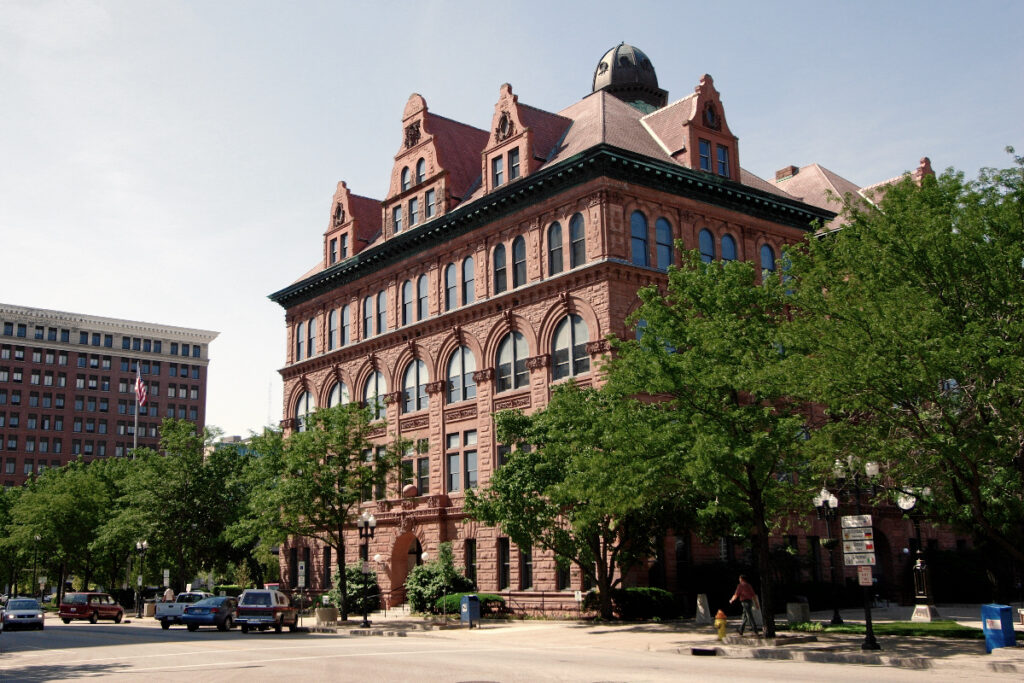
Moving to Peoria, Illinois: A Comprehensive Relocation Guide
Considering moving to Peoria, Illinois? This historic Central Illinois city offers Caterpillar presence, riverfront beauty, and affordable living. With approximately 113,000 residents in 2025 (metro 402,000+), Peoria combines manufacturing heritage with cultural amenities and Illinois’ Downstate economic hub.
Demographic Profile to Consider If Moving to Peoria:
Peoria’s 2025 population is approximately 113,000 residents, making it Illinois’ seventh-largest city, with the metro area exceeding 402,000 in Peoria County. The median age is around 37 years, with working families, Caterpillar employees, healthcare workers, and diverse residents. The population is approximately 66% White, 25% Black or African American, 5% Hispanic, 3% Asian. Peoria features the Illinois River providing scenic beauty, historic downtown, Caterpillar Inc. world headquarters dominating employment, and serves as Central Illinois’ largest city. The city attracts Caterpillar employees, healthcare workers, and those seeking affordable Central Illinois living with amenities. Peoria appeals to working-class to middle-class residents prioritizing affordability and manufacturing employment. The community balances manufacturing heritage with cultural offerings and faces population challenges. Find trusted local services for moving, living, and working in Peoria.Peoria Relocation Directory
Cost of Living to Consider If Moving to Peoria:
Peoria offers exceptional affordability. Median home values range from $120,000 to $180,000 in 2025, among Illinois’ most affordable cities while Caterpillar provides good wages. The median household income is approximately $58,000. Rental properties average $800 to $1,200 monthly. Illinois’ state income tax is flat 4.95%. Property taxes are moderate. Overall cost of living is very low for a city with cultural amenities, making Peoria highly attractive for Caterpillar employees, working families, and those seeking affordable Downstate living. The city provides tremendous value with stable manufacturing employment. Housing costs create exceptional accessibility while manufacturing wages provide financial security relative to costs.
Economy and Job Market:
Peoria’s economy centers overwhelmingly on Caterpillar Inc. (world headquarters) employing thousands in manufacturing, engineering, and corporate operations. The heavy equipment giant drives the regional economy. OSF HealthCare and UnityPoint Health provide extensive medical employment. Bradley University offers education jobs. Government and retail support the population. The Caterpillar presence creates economic stability though dependence on one company. Typical industries include manufacturing, healthcare, education, and government. The economy fluctuates with Caterpillar’s health and global construction equipment demand. The job market attracts engineers, manufacturing workers, and healthcare professionals.
Education:
Peoria Public Schools District 150 serves city students with Manual High School, Peoria High School, and Richwoods High School. School quality varies significantly requiring extensive family research. Bradley University is a private university offering comprehensive programs. Illinois Central College provides community college education. The educational infrastructure serves the diverse population with quality varying considerably.
Recreation and Lifestyle:
Peoria offers Illinois River location with riverfront development, Peoria Civic Center hosting events and Rivermen hockey, Caterpillar Visitors Center, and cultural amenities unusual for the city size. The Peoria Riverfront Museum combines art, science, and planetarium. Residents enjoy Grand View Drive (world’s most beautiful drive per Teddy Roosevelt), Wildlife Prairie Park, and extensive parks. The lifestyle emphasizes affordable living, riverfront recreation, cultural activities, and working-class values. The four-season climate enables varied activities. The community values Caterpillar’s economic contribution (Cat pride runs deep), riverfront beauty, cultural amenities, and affordability. Living in Peoria means accepting Downstate Illinois isolation (2.5 hours to Chicago), economy dependent on one company (Caterpillar), population decline challenges, and some urban issues while enjoying exceptional affordability, stable manufacturing employment creating prosperity relative to costs, and cultural amenities including museums and Bradley University creating quality of life unusual for Central Illinois with Illinois River beauty defining Downstate’s largest city.
Healthcare and Services:
Peoria residents access comprehensive healthcare through OSF HealthCare Saint Francis Medical Center (regional medical center), UnityPoint Health-Methodist, and facilities throughout Central Illinois. The concentration of hospitals serves as a regional healthcare hub with quality medical care.
Transportation:
Peoria is accessed via Interstate 74, Interstate 474, and various corridors. General Wayne A. Downing Peoria International Airport provides limited commercial service. CityLink operates bus service throughout Peoria. Most residents use personal vehicles. Typical travel times to Chicago are substantial (2.5-3 hours).
Conclusion:
Moving to Peoria in 2025 offers affordable Central Illinois living with Caterpillar headquarters, Illinois River beauty, and cultural amenities. The city’s combination of exceptionally low housing costs, stable Cat employment, and museums/university presence makes it ideal for manufacturing workers, engineers, healthcare professionals, and families seeking Downstate Illinois’ largest city where Caterpillar pride meets Illinois River beauty and exceptional value defines Central Illinois’ economic and cultural hub.

